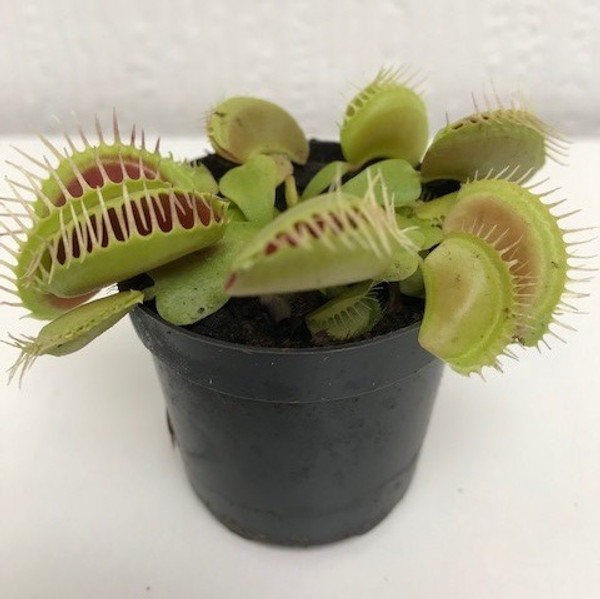Product Overview
Dionaea Muscipula, The Venus Flytrap, widely recognised as the most popular and fascinating of Carnivorous plants. Seeing the traps snap shut, triggered by insects attracted to the sweet nectar produced by the plant, is a wonder of the plant world. Touch a trigger hair and the trap closes its teeth, forming a cage. The insects continued struggle then causes the trap to seal, at which point digestive enzymes start to dissolve its prey. After about a week the trap will re-open to feed again. Easy enough to keep as long as you mimic their natural habitat, coastal bogs of North America.
Secrets of success:
Summer care:
Venus Flytraps need direct sunlight for healthy growth, so a bright South facing windowsill is ideal. They also do extremely well in unheated conservatories. Too little light will produce weak, floppy stems and poor traps.
During growing season, Spring and Summer, stand your Flytrap in about 1cm of pure water. Rainwater is best, as they have evolved to survive in low nutrient soil, and tap water will lead to a build up of too many minerals and will harm the plant. Don`t fertilise for the same reason.
Plants should catch enough food to survive, however if needed you can help to feed them with dead or live insects. Just remember that the traps need to be stimulated after the trap has closed, as to not waste valuable energy with the plant trying to digest non-edible matter which may have fallen into the trap. Don`t shut the traps for fun, this also wastes precious energy and is detrimental to the plant.
If your Flytrap happens to flower in Spring, and unless you are an experienced grower who wants to try to harvest the seeds, then cut off the flower stalk. Flowering takes enormous energy and your plant will grow far more vigorously if prevented from flowering.
In their natural habitat temperatures frequently hit 30c in the Summer and below 0c in Winter, so are perfectly happy in our climate.
Winter care:
As in nature Venus Flytraps have a cold Winter dormancy period between November and February. If grown in a heated room all year then you will need to move your plant to somewhere colder. Put them in an unheated room near a window, or in a garage or shed. If kept in an unheated conservatory then they can be kept there all year round. As the days shorten, and temperatures drop then your plant will die back. This is normal. Once all the leaves and stems have withered simply cut them back. During this period they require less water so keep them just damp, not necessarily stood in water. New growth should then begin around March when you can start to care for as above, Summer care.
Warnings:
Not known to be toxic to humans or pets.








